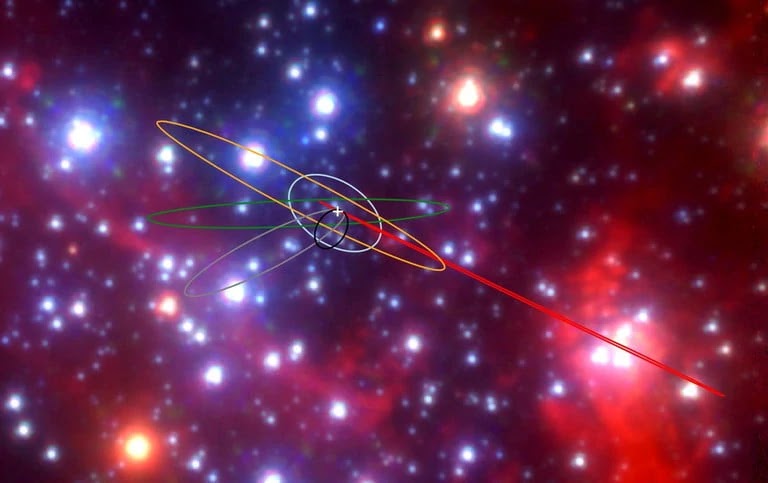
Astronomers have found a mysterious new class of objects at the heart of the Milky Way, which looks unlike anything else discovered previously in our galaxy. These objects “look like gas but behave like stars,” as reported by senior researcher Andrea Ghez, since they start small and compact but then are stretched to a larger size when approaching the supermassive black hole.
The researchers believe that these objects could teach humans about the evolution of stars as well as what happens to celestial bodies in an environment of extreme gravity.
The puzzle started in 2005 when astronomers identified an object close to the center of the galaxy called G1, which appeared to be in orbit around the black hole there in a strange way. In the following years, astronomers found five more objects numbered G2 to G6. At first, those objects were believed to be clouds of gas. However, one bizarre thing researchers observed was that when the object G2 came close to the event horizon of the supermassive black hole, it was not torn apart in the way they'd have expected. Instead, it originally stretched out, before rebounding back toward its original state.
A new analysis of data on these six G objects now makes astronomers believe they were formed when binary stars collided. Binary stars are twin star systems, where two stars are locked in a mutual orbit. Sometimes, however, these stars can smash together and merge, producing a massive cloud of dust and gas surrounding the now singular merged star. Those mergers are believed to be rare. Yet, as the gravitational forces in this region of space are so extreme, it would be able to cause those mergers to happen more regularly than elsewhere in the galaxy.
In the very center of the galaxy is a behemoth of a massive black hole called Sagittarius A* (A-star). Although it's 2.6 million times the mass of our Sun, it's only around 120 Astronomical Units across (an Astronomical Unit is a distance between the Earth and the Sun). This means that a huge amount of mass is squeezed into a rather small space, and the black hole exerts a really strong gravitational pull.
That type of black hole is a supermassive black hole. Astronomers think that almost all galaxies have such huge black holes at their centers (although there are exceptions). We're just starting to learn about the secret lives of those monster black holes, with shocking findings such as the fact that planets might be able to form around them as well as the latest discovery of the G objects.
One of the most challenging but also most exciting features of investigating the Milky Way is that it's an extreme environment where density, as well as gravitational forces, are much stronger than in our solar system.
Ghez’s group is the same one that discovered in 2019 that the supermassive black hole at the center of the Milky Way is getting hungrier. The group theorized that blobs of gas could've been sucked off a star nearby, and fallen into the black hole, causing a change in brightness since the gas glows when falling into the event horizon.
To identify the G objects, the scientists looked at data about the center of the Milky Way that were gathered at the W.M. Keck Observatory. They used a technique named adaptive optics, which allows more accurate imaging by limiting the distorting effects of Earth’s atmosphere in real-time, enabling astronomers to peer deeper into the heart of our galaxy.
They needed to distinguish the G objects from other clusters of stars nearby, so they used a tool named the OSIRIS-Volume Display, that can identify objects’ spectra so that they could track the movements of the G objects while in isolation.
Since the data used to investigate the objects spans over two decades, the researchers have a good level of confidence that what they're observing is a real phenomenon and more than a single strange aberration.
If the G objects are indeed formed by the merging of binary stars, that has implications for the way humans think about mergers occurring under extreme gravitational forces.
Confirming the existence of such objects also means that we can look forward to dramatic events when the objects approach close to the black hole.
The findings were published in Nature.

Jack Ciurlo

ESA/Hubble, M. Kornmesser

Anna Ciurlo, Tuan Do/UCLA Galactic Center Group












COMMENTS